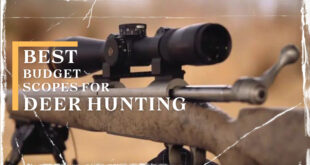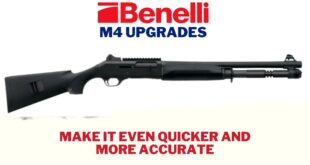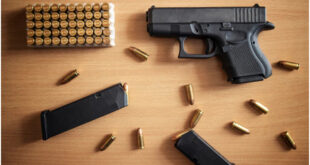
In this article, we will discuss the various features that differentiate the different sectors in a market and that need to be taken into consideration when choosing the ideal optic for your needs.
-
Fixed Or Variable
The fixed scopes differ from the variable option in that they have a less complicated construction. This simple construction equates to increased reliability, and this is why many military forces use fixed scopes for their troops. However, modern construction procedures have increased the reliability of the variable optic option. If you are operating on a budget, it is recommended you choose the fixed scope as they are less costly than the variable scope of a similar quality.
On the other hand, the variable scope allows one to fit a plethora of “jobs” and change magnification according to your needs. For example, you can increase the field of view, avoid mirage distortion, increase transmission of light, and reduce any wobbling perception experienced during unsupported or off-hand shooting.
-
Magnification
The level of magnification utilized is based on the type of shooting being completed, the target size, and the distance of the shot. Smaller targets at longer distances will require optic magnification; however, more is not always better. As increased magnification amplifies the optical imperfections in low and mid-priced scopes, it is possible that the ability to aim accurately will be compromised. Furthermore, optics with increased magnifications can also be heavier and bulkier in size.
Based on personal experience, target shooting at a static distance (e.g. 1000y matches), extremely long range shooting, varmint hunting can utilize 20 to 25x scopes without can problems. However, if you are performing military-style shooting with gongs or paper targets placed at a variable distance, or are engaging in big game hunting at long range, then an optic scope of 12 to 14x is more than sufficient.
-
Front Lens
If the front lens is larger, you will experience increased light and should be able to take more accurate shots in lower light conditions. I use the term “should” because, in reality, the light transmission needs to take other variables into accounts, such as light transmission capability of the optic lens crystal and the tube diameter of the scope. A reference valve can be obtained to identify the low light capability of the scope, also known as the “exit pupil” of the scope; thereby, dividing the front lens diameter by the lens magnification valve. For example, if we have a 10×40 scope, the exit pupil calculated will be 40/10 and this equates to 4mm.
Once again, more is not always a better option in this situation. An exit pupil receives only a specific amount of light and this light will decrease with time. Moreover, high exit pupil values are beneficial when shooting in low light situations, but if you are using the scope in an average lighting condition (such as the middle of the day) the amount of light received can prematurely strain your eyes. Wider objectives will force you to mount the scope at a higher position over the barrel line; thereby, forcing you to keep your head higher and increase the errors based on rifle canting. From prior experience, if you were to use this option for hunting purposes where shots are in low lighting, then 50mm is plenty. In fact, 50mm is good enough for target shooting as well, but 40mm would be better.
-
The Field Of View
The field of view, shortened to FOV, is the degree of view one can see via the scope at any given position. The FOV is indicated in feet at 100 yards or at meters at 100m, shortened to f@100yds and m@100m respectively. The scope’s field of view is determined according to the internal construction of the eyepiece. It is essential that this parameter is considered when locating the ideal optic scope for dynamic shooting or hunting purposes. The reason is that wider fields of view will assist in tracking moving targets, as well as spotting various targets within the same area and following their movements.
-
Tube Diameter
A scope’s tube is the cylindrical part of the optic scope found between the turret and the eyepiece, and between the objective cone and the turrets. The diameter is typically measured using millimeters and is a vital parameter to select the scope; for example, a diameter is indicated as 1″ when it has a millimeter measurement of 25mm. Wider tubes provide more light to be transmitted and offer higher degrees of adjustment. In previous years, almost all scopes on rifles presented with a 1″ tube; however, many brands nowadays will have 30mm tubes or 40mm tubes.
-
Eye Relief
When peering through a telescopic sight, the eye can view a full landscape image from an online distance via the rear lens. The distance is known as eye relief. The value is also measured in millimeters or inches, and the average range of eye relief for rifles is between 3″ and 4″. Eye relief is often related to the scope’s magnification with higher magnification offering shorter eye relief, but this is not a set rule.
When choosing the ideal scope, eye relief needs to be considered if the scope is mounted on rifles with heavy recoil features. This is important because it can help avoid the “scope kiss” – a technique that helps avoid danger when using the rifle.
 www.GunsandOptics.com Tactical & Hunting Gear Review
www.GunsandOptics.com Tactical & Hunting Gear Review






